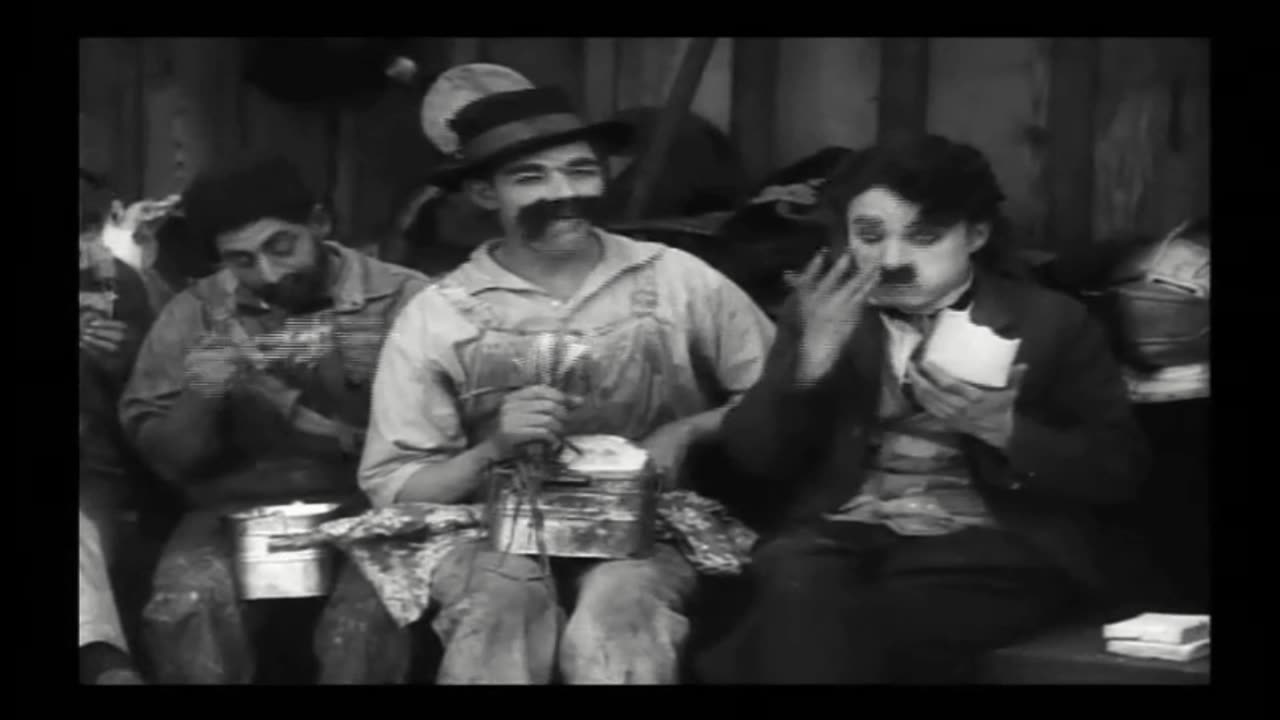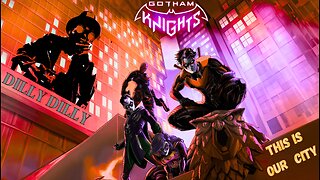Premium Only Content

Behind the Screen (1916 American silent short comedy film)
written by, directed by, and starring Charlie Chaplin, and also starring Eric Campbell and Edna Purviance.
Plot
The film takes place in a silent movie studio. Charlie Chaplin plays stagehand named David who has an enormous supervisor named Goliath (Eric Campbell). David is overworked but is still labelled as a loafer by the lazy Goliath and his supervisor. A country girl (Edna Purviance) arrives at the studio in hopes of becoming an actress, but is quickly turned away by Goliath. Most of the other stagehands go on wildcat strike to protest their sleep being interrupted during their lunch break. Only David and Goliath remain on the job. The girl returns and stealthily dresses in one of the striking stagehand's work clothes. Disguised as a man, she gets a job as a stagehand too. David discovers that the new stagehand is actually a female. When he gives her a series of quick kisses, the action is seen by Goliath who makes effeminate gestures at David. Edna overhears the strikers' plans to blow up the studio with dynamite and helps thwart their villainous plot.
Much of the film is slapstick comedy involving Chaplin manhandling large props, mishandling the control to a trap door, and engaging in a raucous pie-throwing fight which spills over into another studio where a period drama is being shot. In one scene Chaplin deftly carries 11 chairs over his back in his left hand and lifts a piano in his right hand.
Cast
Chaplin and Purviance in the final scene of the film
Charlie Chaplin as David (Goliath's assistant)
Edna Purviance as The Girl
Eric Campbell as Goliath (a stagehand)
Albert Austin as Stagehand (uncredited)
Production
Behind the Screen was the last of Chaplin's comedies to use a movie studio as a backdrop. Earlier Chaplin films, such as A Film Johnnie, His New Job, and The Masquerader had also been set, at least partly, in a silent movie studio. In Behind the Screen, Chaplin pokes gentle fun at Keystone Studios where he broke into the movies in 1914 and worked under contract for Mack Sennett for a year. The pie-throwing sequence is an obvious allusion to the Keystone style of slapstick comedies where such skirmishes were overly common. One intertitle humorously refers to the pie-throwing gimmick as "a new idea."
-
 2:58:23
2:58:23
TimcastIRL
3 hours agoBiden Pardons WERE FAKE, NYT Report PROVES Trump WAS RIGHT, Fauci Faces Charges | Timcast IRL
193K63 -
 8:01
8:01
MattMorseTV
9 hours ago $0.63 earnedTrump just DROPPED a BOMBSHELL.
30.2K34 -
 LIVE
LIVE
Cancel This Podcast
3 hours ago $0.01 earnedROLE-PLAYING GRINDS: FINAL FANTASY XIV, DRAGON QUEST X & OCTOPATH COTC - CTP GAMING MONDAYS!
56 watching -
 LIVE
LIVE
FoeDubb
5 hours ago🏰KINGDOM MENU :🎮MONDAY NIGHT PATROL IN GOTHAM CITY ON DECK DILLY DILLY!!!
17 watching -
 1:34:52
1:34:52
Glenn Greenwald
6 hours agoIs There Evidence of Epstein's Ties to Israel? Yes: Ample. Brazil's Chief Censor Orders Rumble to Ban US Citizen and Turn Over Data | SYSTEM UPDATE #486
129K110 -
 LIVE
LIVE
GamerGril
54 minutes agoMarvel Rivals Monday | Battle Of The Bronze
31 watching -
 LIVE
LIVE
FanatikGaming
33 minutes ago💪Monday Motivation🦾 - Legends Never DIE!💯💯 ATWU - BTTB!☝️🔥
187 watching -
 LIVE
LIVE
WolfLinksShadow
51 minutes agoMario Kart Monday & More!
28 watching -
 58:16
58:16
Redacted News
9 hours agoThe Secret Space Program IS REAL and this Whistleblower is EXPOSING all of it
66.3K237 -
 LIVE
LIVE
This is the Ray Gaming
2 hours ago $0.03 earnedHead Shots and Heart Breaks | Rumble Premium Creator
64 watching